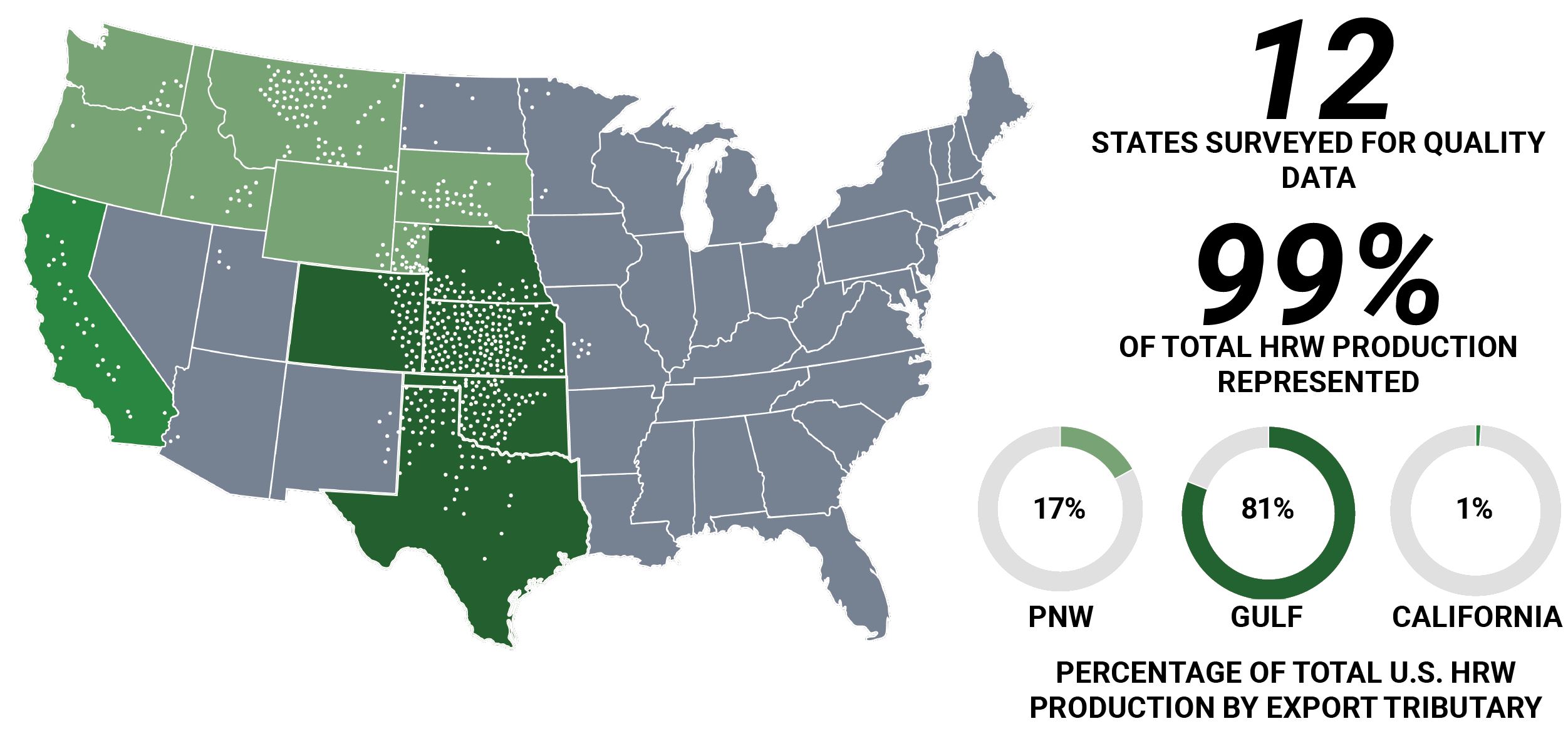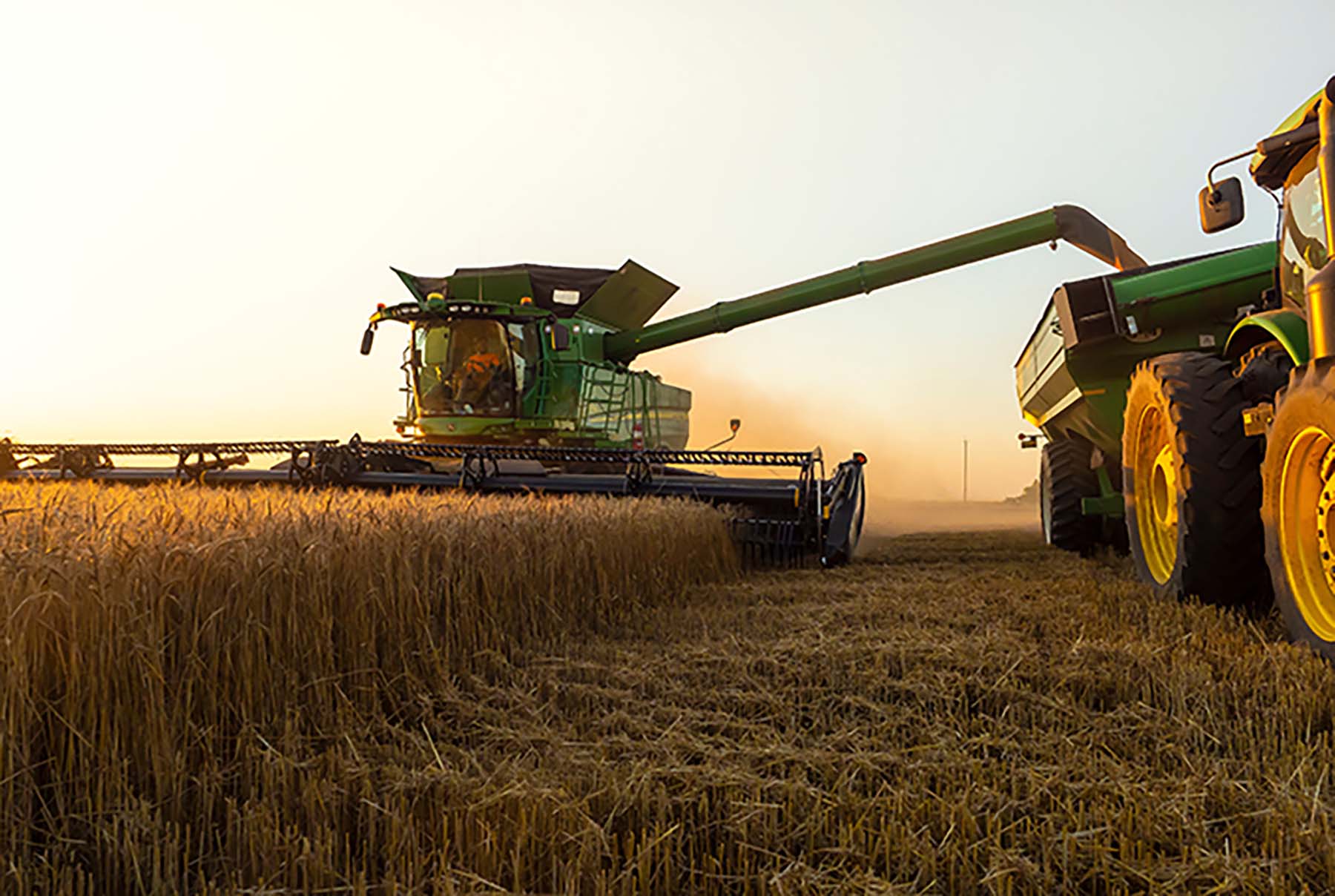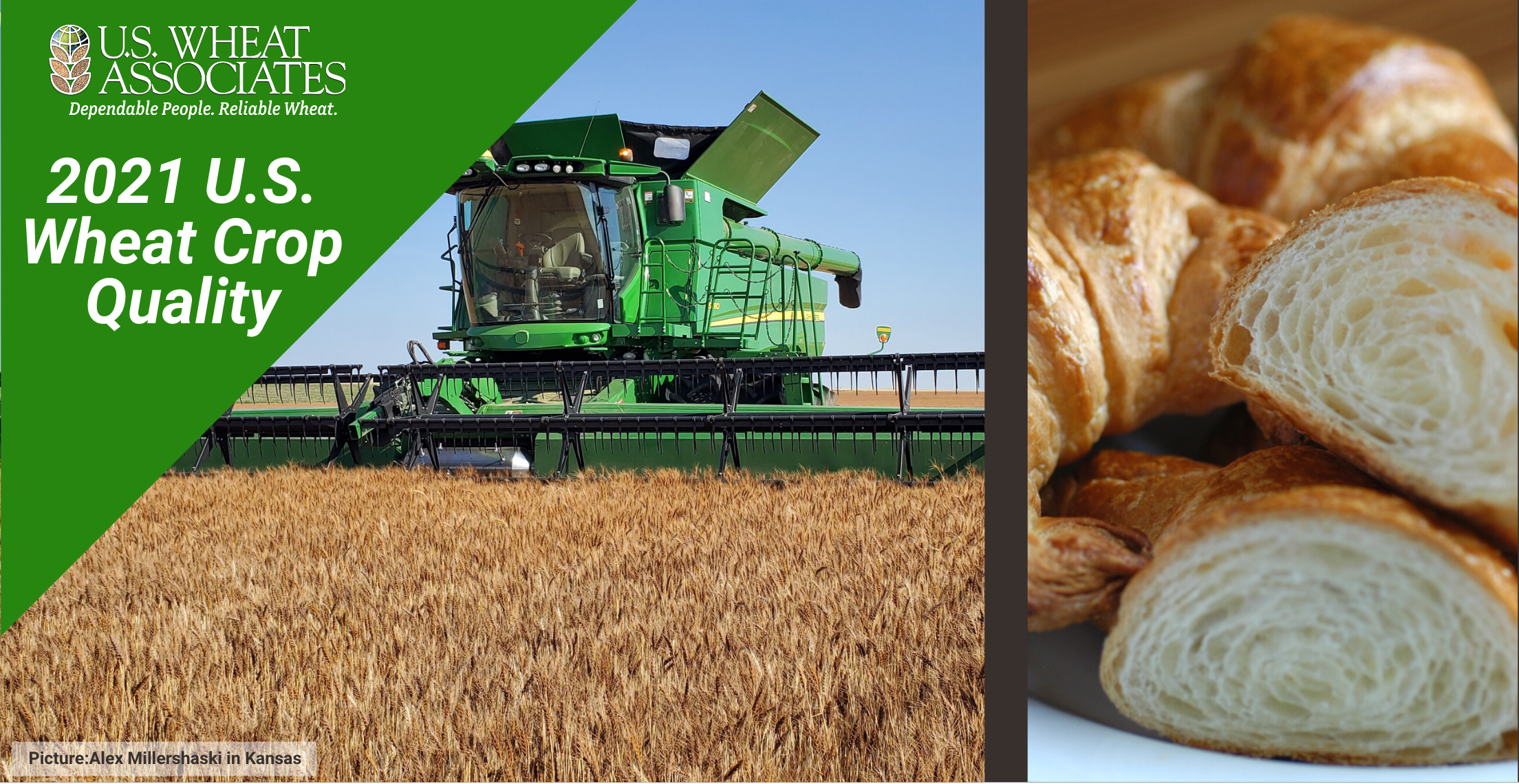Variable growing conditions greatly influenced the 2021 hard red winter (HRW) wheat crop. In areas with favorable growing conditions, high yields resulted in lower protein but excellent kernel characteristics. However, regional swings in temperature and drought led to high protein, lower yields and smaller kernels.
As a result, the overall crop has generally good kernel characteristics with flour, dough and bake attributes equal to or better than last year and many of the 5-year averages. The loaf volumes achieved indicate there is sufficient protein quality to make pan bread that easily exceeds the U.S. quality target for loaf volume, with dough mix times and stabilities that are slightly greater than the 5-year average.
This crop meets or exceeds typical HRW contract specifications and should provide high value to customers.
Weather and Harvest
Planted area for the 2021 hard red winter crop recovered from last year’s historic lows with an estimated 9.6 million hectares (23.6 million acres) seeded in fall 2020, a 10% increase over last year.
Growing conditions varied among the HRW production regions. Eastern areas of the Southern and Central Great Plains experienced favorable growing conditions resulting in high yields, very good kernel characteristics, but lower protein. While western areas of the Southern and Central Plains experienced drought and record freeze events resulting in lower yields and smaller kernels, but higher protein. The Northern Great Plains and PNW suffered historic drought conditions that hurt yield and kernel characteristics.
Production of the 2021 HRW crop is estimated to be 20.4 million metric tons (MMT), up from 17.93 MMT in 2020 and above the 5-year average of 20.8 MMT.
With very few exceptions, disease and insect pressure were not major issues for the 2021 HRW crop.


2021 Crop Highlights
- The Composite average grade for the 2021 hard red winter harvest survey is U.S. No. 1 HRW. Despite challenging growing conditions in some regions, overall, 84% of Composite, 85% of Gulf-tributary and 83% of PNW-tributary samples graded U.S. No. 2 or better.
- Test weight Composite average is 79.5 kg/hl (60.4 lb/bu), indicative of sound wheat.
- Protein content distribution varies by growing region; Composite average is 11.9% (12% mb), equal to last year but below the 5-year average.
- Composite averages for dockage (0.5%), total defects (1.7%), and foreign materials (0.3%) are above 2020 and 5-year averages.
- Shrunken and broken kernels (0.8 %), values reflect the environmental challenges for this year’s crop.
- Wheat falling number Composite average is 372 sec, indicative of sound wheat.
- The Buhler lab mill extraction Composite average is 74.9%, above last year but below the 5-year average.
- Flour ash Composite average of 0.50% (14% mb) is comparable to last year and 5-year averages.
- Farinograph peak and stability times of 5.1 and 9.3 min, respectively, are shorter than last year but higher than the 5-year average.
- Dough properties suggest that this crop has similar resistance to extension (tenacity) to both last year and the 5-year average, but slightly weaker dough strength (Alveograph W value) compared to last year and the 5-year average. Dough extensibility was significantly lower than last year but similar to the 5-year average.
- Average bake absorption is 62.1%, below last year but comparable to the 5-year average.
- Average loaf volume of 877 cc is well above last year and 5-year averages, indicative of acceptable baking quality.
Read more about the 2021 U.S. hard red winter wheat crop here and the full regional report here.
[av_hr class=’default’ icon_select=’yes’ icon=’ue808′ font=’entypo-fontello’ position=’center’ shadow=’no-shadow’ height=’50’ custom_border=’av-border-thin’ custom_width=’50px’ custom_margin_top=’30px’ custom_margin_bottom=’30px’ custom_border_color=” custom_icon_color=” id=” custom_class=” template_class=” av_uid=” sc_version=’1.0′ admin_preview_bg=”]
2021 Crop Quality Data on Other U.S. Wheat Classes
Hard Red Spring
Soft White
Soft Red Winter
Northern Durum
Desert Durum® And California Hard Red Winter
Hard White


